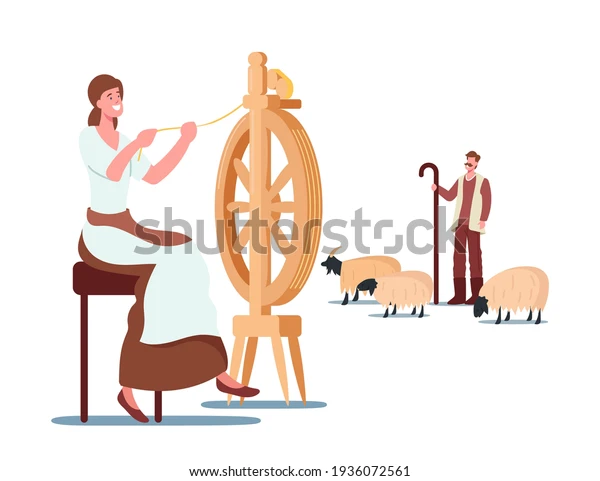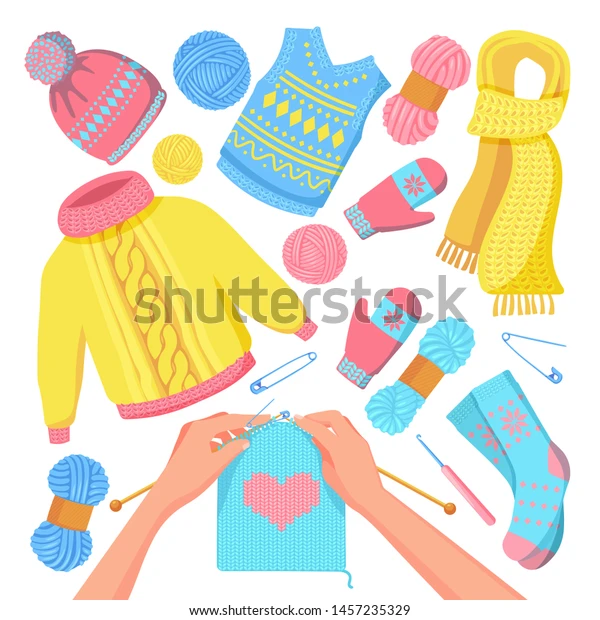Introduction
Wool is a kind of fibre that is an important component in every living being’s life. It is obtained from various animals using specific extraction techniques, and it is then used for a variety of applications. Wool is that substance that gives protection to us in chilling weather conditions. It is used irrespective of country or place or type of people. Different animals contribute to making this useful fibre for us. We use special machines and procedures to extract those raw fibres and process them for daily use.
What is wool made of?
Wool is an animal fibre that is mostly composed of protein with a small number of lipids. The hairs obtained from animals like sheep, goats, yaks, rabbits, and other animals are utilised in the fabric industry for the manufacturing of wool. This contains less cellulose than other plant fibre including cotton.
Steps of making wool from sheep
The two types of fibres that are present in sheep’s hair. Those are beard hair and skin hair. Skin hair is used to make the fibre for wool. In order to raise lambs with just soft underlayers to generate such soft and fine hair, varieties of sheep with only thin under hair were specially chosen. Selective breeding is the method of picking parents to develop offspring with distinct features, such as sheep with silky hair.
Various methods are involved in the extraction to making wool
Shearing-
- This is the preliminary stage in the processing of fibre into wool.
- The sheep’s fleece and a thin skin layer are removed using this method.
- This treatment is only performed during the spring since sheep don’t require their outer layer of skin to stay warm.
- Shearing is performed by machines and on occasion by human hands.
Scouring-
Big containers of water are used to clean the shaved hair after the shearing process to remove oil, dust, and other impurities. Cleaning freshly shorn hair is referred to as scouring.
Sorting-
During sorting, hairs of different textures and types are separated. After this one can distinguish between low and high-quality fibres. The lower-grade fibres are used to make carpets, while the better-quality fibres are used to make garments. The fleece is sorted as per type and texture.
Dyeing-
This process includes colouring the fibres as natural fibre is usually white, black, or brown.
Rolling, combing, and straightening-
Following the colouring process, the recovered fibres are combed, rolled, and straightened into skeins.

Yaks, goats, lamb, and rabbits are just a few of the various species that can be used as the primary source of wool. These animals’ skin hairs are made up of two different types of fibres, which when combined create their fleece:
- The unruly and coarse hair.
- The soft, fine, hair that is near the skin.
Other sources of wool
- Yak: The use of yak wool is widespread in Tibet and Ladakh. They are well known for having long fur.
- Angora goats: Mountainous regions like Jammu and Kashmir are home to many angora goats. The fibre from Angora goats is angora wool, also referred to as mohair. A distinct breed of goat famous for its soft, silky under hairs is the cashmere goat. They are therefore used to weave shawls. These shawls are frequently referred to as “Pashmina shawls” in India.
- Camels: Camel’s body hair can be used to create many types of wool. Bactrian camels produce the best-quality wool. Alpacas and llamas from South America also produce wool.
- Angora rabbits: Angora wool is also known to be produced by angora rabbits and is soft, silky, and is sold at very high rates.
Properties of wool
Elastic- Natural flexibility of wool makes it feasible for garments to expand to accommodate your body while keeping their original shape. As a result, it is advised to exercise in fine wool clothing.
Odour resistant- Compared to synthetic textiles, wool is better at absorbing moisture vapour, which allows less perspiration to gather on your body. Merino even absorbs and locks away the smells from perspiration that are later released upon washing.
Soft- Wool fibres are soft because they can stretch significantly more than more typical, bigger wool fibres since they are so thin. Wool has a delicate, silky sensation next to your skin.
Breathable- Wool fibres can move a lot of moisture away from the skin so that it can dissipate into the atmosphere, making them breathable.
Warm and cool- Unlike synthetic fabrics, wool is an active fibre that reacts to changes in the body’s heat, making it both warm and cool. As a result, it helps to keep you warm in the winter and cool in the summer.
Anti-wrinkle- Because each fibre is curled like a spring on a tiny level and springs back into position when bent, this material is anti-wrinkle. Because of this, wool apparel is naturally wrinkle-resistant

Summary
The body hairs (fleece) of animals such as sheep, goats, rabbits, llamas, alpacas, camels, bison, and yak are used to create wool, a type of animal fibre. The breeds of animals employed influence the grade of the wool on a worldwide scale. In order to stay warm and sheltered from the chilling weather, the most of animals that live on hilly slopes develop thick long hair surrounding their bodies. Animal fur holds a significant amount of air which is a poor conductor of heat. Thus, they continue to be heated.
In cold areas, woolen clothes keep us warm. Many different animal breeds can generate wool. The high-quality wool produced by the Merino, Rambouillet, Debouillet, and Lohi sheep breeds is well known. Angora and Cashmere goats produce the soft, wool-like Mohair and Pashmina, respectively.
Frequently Asked Questions
1. Is wool a fire-resistant material?
Ans: Wool has a higher level of fire resistance than other fibres since it is naturally flame resistant. Wool does not melt, leak, or adhere to the body when it burns, either.
2. What type of wool is the warmest?
Ans: Angora is the wool that provides the most heat. It is 2.5 times warmer than fur from sheep and is thick and fluffy. It also has the strongest moisture-wicking properties of any natural fibre.
3. Which disease is triggered by the wool industry?
Ans: Wool apparel is frequently associated with a synthetic sickness known as anthrax. It used to be a major worry, mainly for wool sorters, but because of industrial practices and changes in exporting countries where anthrax is an endemic disease, it is now almost fully regulated in the wool textile industry.
 Mission Statement
Mission Statement
“Empower every student to achieve full potential”
88Guru has been established with the social objective of making quality video-based learning material available to all Indian students. Technology, Connectivity and Social Media are rapidly changing the world of Education and we wish to lead the transformation of the tuition industry in India.
88Guru is the perfect complement to the current tuition model. 88Guru creates a wonderful opportunity for children and parents to bond while engaging in a valuable learning activity. It also provides the complete curriculum at your fingertips for those moments when you need some help at short notice. We believe that this mode of tuition could be transformational, adding hours to a child's day while providing complete control over the learning process.
Every course is taught by the best teachers from India's top schools and conducted in an engaging manner to keep students involved. The e-learning process consists of video-based instructions, computer-graded assignments, and a dashboard which allows the student and parent to track progress.


